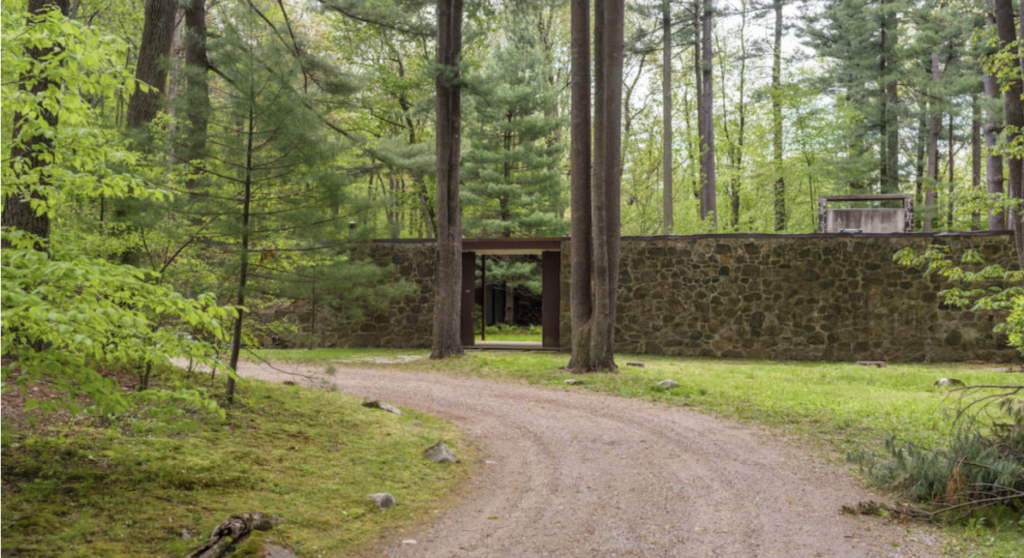Events May 2024



Glass House + Noyes House
Visit two important examples of New Canaan mid-century residential architecture on The Glass House’s one-day study tour of the Philip Johnson Glass House (1949) combined with the Noyes House (Eliot Noyes, 1954).
Tickets for this program include tours of both sites and shuttle transportation between sites.
Program Itinerary
12:45– Arrive Glass House Visitor Center 1:00 pm – Travel to the site via shuttle
3:00 pm – Travel to the Noyes House via shuttle
3:15 pm – Tour of the Noyes House led by Fred Noyes FAIA, LEED AP, son of Eliot Noyes
4:30 pm – 4:45 pm – Shuttle returns to the Glass House Visitor Center
The Glass House, built between 1949 and 1995 by Philip Johnson, is a National Trust Historic Site located in New Canaan, CT. The pastoral 49-acre landscape comprises fourteen structures, including the Glass House (1949), and features a permanent collection of 20th-century painting and sculpture, along with temporary exhibitions.
The Eliot Noyes House is the one of the seminal houses of the Modern era, incorporating the principles of Modernism interpreted with Noyes’ unique touch of understated elegance. To this day the house is highly provocative–even controversial. Noyes, making a statement about organizational clarity, divided public and private areas in separate enclosures– with no internal connection.
The house melds seamlessly with its surrounding landscape. Long unbroken stone facades mimic typical New England stonewalls. And the open courtyard brings nature into the center of the house. Natural materials—just a few, stone, wood and glass–give the house its tactile quality. The juxtaposition of the heavy stonewalls to the transparent glass walls emphatically contrasts the solidity of the first with the fragility of the latter.
The house is historic with references to Greek, Roman and Chinese courtyards. Yet it is sublime, specifically designed to accommodate the turmoil of everyday family life. Simplicity and a rigorous adherence to design principles – Eliot Noyes’s trademarks– are both evident here.
Eliot Noyes was a first tier architect, and an equally accomplished Industrial Designer, creating, for example, classic IBM typewriters, Mobil gas pumps, and Cummins diesel engines. In addition, Noyes spearheaded Corporate Design, consulting to IBM. Westinghouse, Mobil Oil, and Cummins to help those companies achieve corporate structures to reflect their company’s inherent qualities.
Trained in the classics as a Harvard undergraduate, Noyes switched to architecture at Harvard’s graduate school. After taking a hiatus to join an archeological dig at Persepolis in Iran, he found his architectural footings when Walter Gropius and Marcel Breuer came to Harvard from Germany, bringing with them the teachings of the Bauhaus. The Bauhaus principles remained strong with Noyes throughout his career— namely, that the best design, of any sort, is based on improving the function of the use it is serving. And that all of design and art— architecture, landscape, sculpture film, painting and graphics—is of a piece.
Winning the prestigious Wheelwright Fellowship on graduation, Noyes traveled to see first-hand the architecture in the US and Mexico including works of Frank Lloyd Wright, Eliel Saarinen and Richard Neutra. In 1940, on Gropius’ recommendation, he then became the first Director of Industrial Design at the Museum of Modern Art (MoMA). He built that department using examples of industrial design based on his architectural principles. It was at MoMA where he developed his skills as an industrial designer. It was also through MoMA that he met Charles and Ray Eames and Eero Saarinen, all becoming lifelong friends.
After a brief partnership with Breuer, Noyes started his own architectural office in 1948. His projects included a wide variety of project types in both architecture and industrial design. Corporate design flourished when he became a consultant to IBM, helping them develop a complete firm-wide design program including architecture, industrial products, graphics and identity—an entirely new application of design principles. Other corporations soon followed. The phrase “good design is good business” originated from Noyes.
Noyes moved to New Canaan in 1948. Finding it a good community, he persuaded his colleagues—first Marcel Breuer, then John Johansen, Philip Johnson and finally Landis Gores to settle there too. That group, known as the Harvard Five, helped spearhead the modern movement in this country.
Frederick Noyes, FAIA, is immersed in his twined passions of architecture, biology, and education. For over thirty years, he has run his own architectural firm and designed everything from houses to hospitals. He was elected to the AIA College of Fellows (2001) and awarded an honorary Doctorate of Education from the Boston Architectural College in 2007. Mr. Noyes has remained close to academia, both as a student (a decade of graduate studies in biology) and a teacher (visual studies at Harvard; lecturer in biochemistry at Harvard Extension; and biology at Miles and Wheelock Colleges). Associated with the Boston Architectural College (BAC) since 1974, Mr. Noyes has taught at all levels at the BAC, chaired its Board of Directors from 1995-1999, and is currently an Overseer.
Friday May 17, 1:00–4:45 pm
Glass House Visitor’s Center, 199 Elm Street, New Canaan, CT
Register